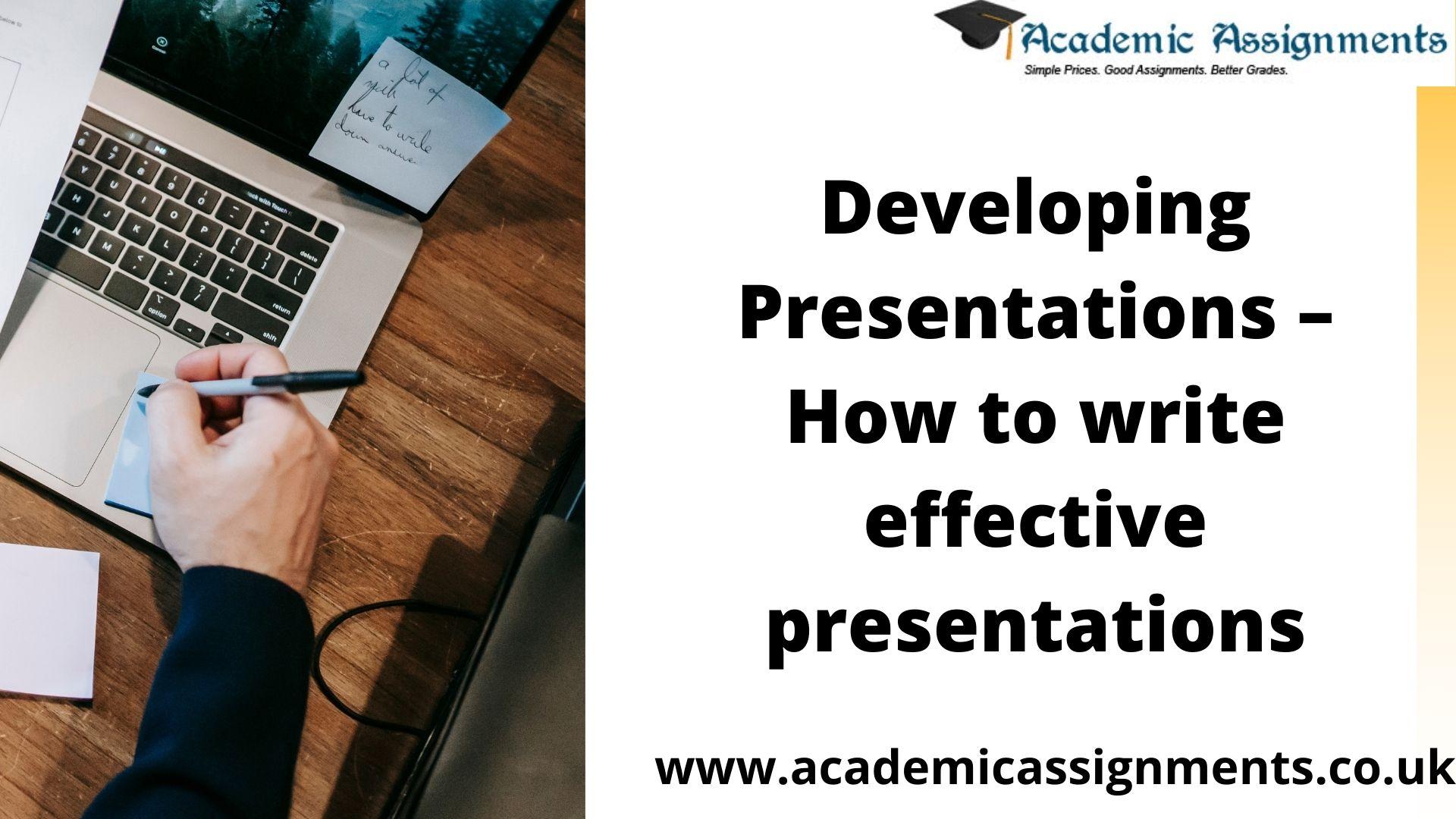Developing Presentations – How to write effective presentations
Developing Effective Presentations
In today’s professional world, powerful presentation skills are crucial for clearly communicating ideas, influencing decisions, and advancing careers. From elementary school show-and-tells to corporate boardrooms, presentations are frequently required across many contexts. Follow these best practices to create and deliver engaging, polished, and impactful presentations.
Careful Preparation is Key
Thoughtful planning and development well in advance of the presentation date is fundamental. Begin by clearly defining your core objective and 2-3 key messages you want your audience to take away. What is the purpose of this presentation? What ideas or information do you most want them to understand and remember?
Next, carefully consider your audience and tailor the content to their knowledge level and interests. For example, a presentation to a group of engineers would use more technical details than one geared for executives focused on business implications. Customize the presentation to best resonate with those in the room.
Thoughtfully organize your material logically with an introduction, body, and conclusion. Craft a strong opening hook to capture attention right away. Use clear transitions to guide listeners from one key point to the next. Close by summarizing the main ideas and purpose of the presentation.
Polishing Your Slides and Visuals
While most presentations today utilize slide decks, it is important not to simply put large blocks of text on slides and read them verbatim to the audience. Slides are most effective when used judiciously to display key phrases, data, pictures, charts and graphs that complement your narrative.
Keep text minimal – the slides should reinforce what you are saying, not just echo your words. Use concise bullet points, statistics, and other sparing text elements to highlight key takeaways. Avoid walls of text and overly crowded slides.
Charts, graphs, and images can instantaneously communicate important information and concepts. A pie chart instantly conveys proportional data far better than several sentences of text. Photographs and illustrations make your presentation more engaging and memorable.
Limit excessive animations and transitions. While subtle slide motion can elegantly guide the flow, too much is distracting. Use clean, consistent slide templates for a polished look. Avoid noisy, chaotic effects and backgrounds.
Practice Makes Perfect Delivery
With your objective clear and visuals prepared, practice is essential to flawless delivery. Thoroughly rehearse your presentation multiple times. Refine the narrative flow and pace to convey each key point within the time allotted smoothly.
Practice in the actual room where you will present using the same equipment. Check that projectors display proper sizing and focus. Confirm all multimedia and notes function as expected.
As you present, establish eye contact and engage with your listeners. Welcome questions provide instant feedback on areas to clarify or expand on. Repeat inquiries so the full room can hear before thoughtfully answering.
Walk around the stage area to add movement and draw focus. Use natural hand gestures and vocal variety to hold attention. Avoid nervous tics like excessive pacing. Pause for key points to sink in. Close by summarizing your main message and thanking everyone for their time and interest. Offer to follow up individually if they have any additional questions.With diligent preparation and rehearsal, you can deliver seamless, polished presentations that educate and inspire your audiences. Seek resources like presentation seminars and coaching to hone your skills over time.
Author Bio: Mark Edmonds, a specialist at Academic Assignments, has practical experience in making convincing presentations. Enthusiastically for effective communication, he consolidates academic information and pragmatic skill to direct students in making significant presentations that resound with different crowds. Mark’s obligation to quality assignment help guarantees students succeed in their academic interests and without hesitation exhibit their thoughts.

 Blogs
Blogs





